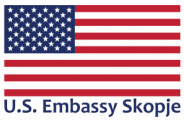In August this year, the State Department’s Global Engagement Center released a report analyzing Russia’s disinformation and propaganda ecosystem. The report contains an overview of the five pillars of this system, indicating their systematicity in creating a multiplied effect in the media. More specifically, it describes in detail how the tactics of one of the pillars, proxy sources, interact to intensify malicious content and create the illusion of credibility. The State Department says Russian operatives are using the five pillars online to intensify false narratives and conspiracy theories in order to manipulate the public and create confusion and fear. The Global Engagement Center (GEC) leads and coordinates US Government efforts to recognize, understand, expose, and counter foreign propaganda and disinformation.
The report states that Russia’s disinformation and propaganda ecosystem is a system of official, proxy and undeclared communication channels and platforms that Russia uses to create and propagate false narratives. The success of this system is reflected in the fact that an ordinary person who follows content over the Internet can hardly understand that it is a matter of disinformation.
Russia’s disinformation and propaganda ecosystem consists of five main pillars, the report said, adding that Russia has direct responsibility for the use of tactics and platforms as part of its approach to using information as a weapon. The following is a chart with the five pillars of the ecosystem:
The five pillars of Russia’s disinformation and propaganda ecosystem
According to the GEC report, the five pillars of Russia’s disinformation and propaganda ecosystem are the following:
Official communication of the state
Global state-funded messages
Cultivation of proxy sources
Weaponization of social media
Cyber-enabled disinformation
All five pillars are coordinated with each other in order to systematically create a multiplied effect in the media. Proxy sources interact to intensify malicious content and create the illusion of credibility.
The first pillar of this ecosystem is composed of the official communication of the state, as follows:
Statements from the Kremlin or the ministries.
Official communication on social networks.
Statements and quotes from officials.
The second pillar consists of state-funded global channels aimed at spreading messages with a certain narrative, as well as international socio-cultural institutions. Their goal is the domestic and foreign audience. In this pillar are:
State-funded media for an international audience, such as the international news agency Sputnik.
State-funded media for an international audience, such as the Russian agency RIA.
Russian-funded foreign media.
International Russian socio-cultural institutions.
The third pillar covers proxy sources. This pillar focuses on developing proxy resources in language centers that will contribute to the distribution of propaganda narratives. Chinese, Iranian, and Russian disinformation operations often complement each other and use similar tactics. These include the following media or elements:
global media representing the Russian side.
local media.
media that knowingly spread Russian propaganda.
media that unknowingly spread Russian propaganda.
external reinforcement of narratives.
Profiles of some of the proxy sources
The Strategic Culture Foundation – an online magazine, registered in Russia, used by the Foreign Intelligence Service (FIS) and closely affiliated with the Russian Ministry of Foreign Affairs. One of its main tasks is to publish marginal Western authors and conspiracy theorists, thus providing a broad international platform for their typically viral anti-Western and anti-American views.
Global Research – This is a Canadian website that is an important part of the ecosystem. It has a huge list of marginalized authors and conspiracy theorists and it is used as a database of websites in Russia and China. Interestingly, this website tried to present the coronavirus pandemic as a conspiracy of the West, publishing articles claiming that the virus originated in the United States and was developed in order for the global elite to control the world. According to the report, one of the articles on the coronavirus was published or linked to more than 70 websites and publications.
New Eastern Outlook – This is a pseudo-scientific electronic publication used for publications by the Institute of Oriental Studies at the Russian Academy of Sciences, which promotes disinformation and propaganda focused on the Middle East, Asia, and Africa. It is essentially a fusion of the pro-Russian views of Russian academics with the anti-Western views of Western marginalized authors and conspiracy theorists. This publication seeks to reap the benefits of being affiliated with the academy, while at the same time concealing its links to Russian-funded institutions.
News Front – This is a Crimean medium used for disinformation and propaganda, and especially to support Russian-backed forces in Ukraine. It is linked to the Russian security services and funded by the Kremlin.
South Front – This is a multilingual website registered in Russia. It is used for disinformation focused on military and security issues. Visible infographics, maps, and videos are used, and the Kremlin views are combined with a detailed knowledge of weapons systems or ongoing conflicts.
Katehon – This is a Moscow-based quasi-think tank that spreads viral anti-Western disinformation and propaganda through its website, which is available in five languages. The people who run it have obvious ties to Russia and Russian intelligence. This think tank in the ecosystem has the task of providing supposedly independent analytical material, aimed mainly at European audiences, with content ostensibly dedicated to “creating and defending a secure, democratic and just international system”.
ru – serves as a platform for Russian ultranationalists to spread disinformation and propaganda aimed at Western and other audiences. Inspired by Alexander Dugin’s Eurasian ideology, its goal is an information war against the Western ideals of democracy and liberalism. Its cooperation with other media in the ecosystem of disinformation and propaganda expands the scope of its publications, which aim to destabilize and weaken Western institutions.
The fourth pillar consists of the use of social media as a weapon and consists of the following elements:
spreading propaganda through social media.
active campaigns that undermine the credibility and trust in the institutions.
Protests initiated or supported by Russia.
The fifth pillar covers disinformation aided by cyber techniques, such as the following:
This summary of the GEC report was prepared by the F2N2 team, and the full report can be found at this link.


